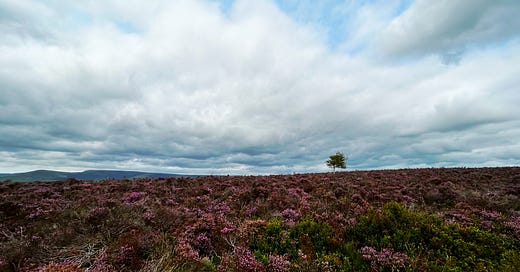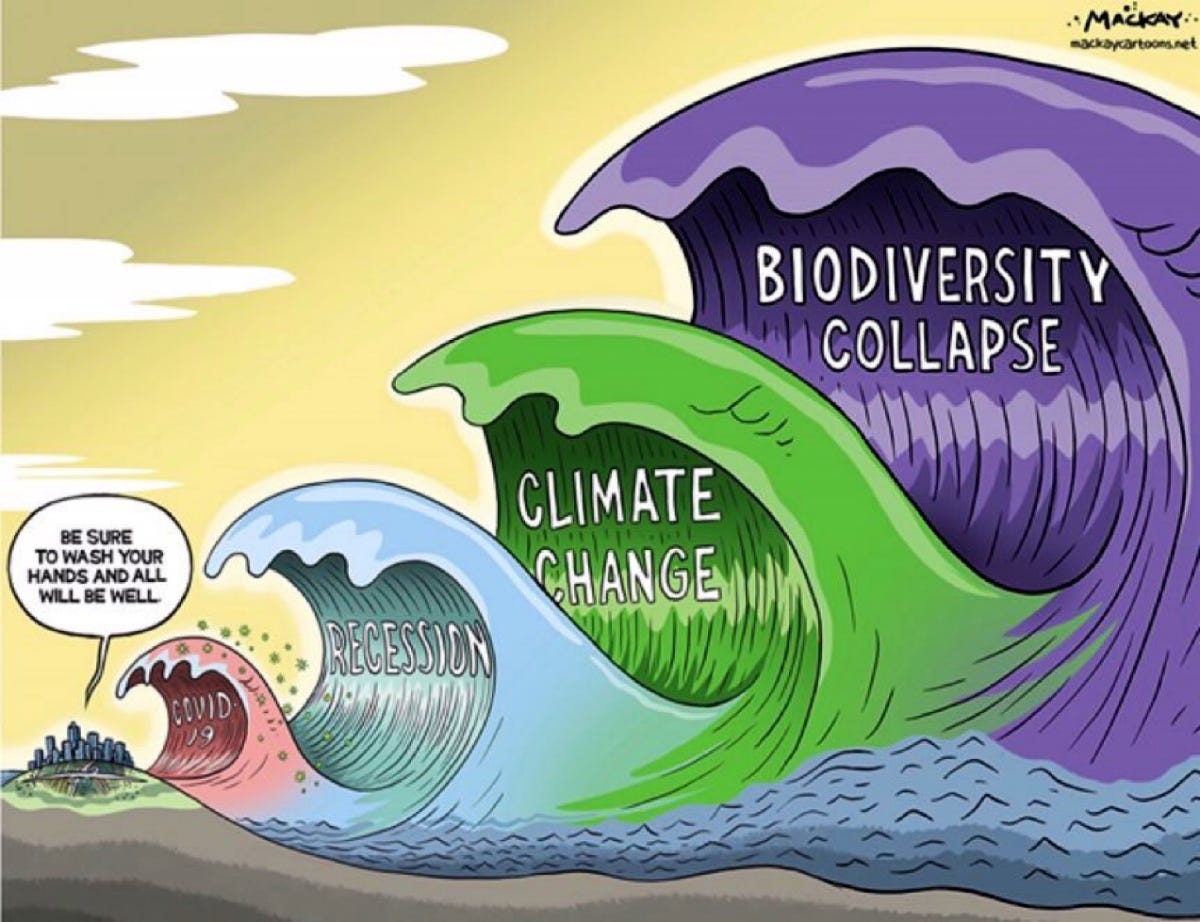A life affirming built environment ...
Biodiversity 2030, Biophilia Camp 2023, and the Vagus Nerve
Welcome and thank you for chosing to read Regen/ Notes.
2030
Built environment organisations and projects are life-affirming, operating as nature does, out of love for all of life, with the thriving and wellbeing of all life at the centre of its purpose, in every action and decision.
Biodiversity 2030
Towards the close of 2022, the Kunming-Montreal Global Biodiversity Framework, endorsed by most countries worldwide, set several nature-based targets to “halt and reverse” biodiversity loss by 2030.
Seven years.
Increasingly, albeit slowly, we are realising that such healing of our future is not in COP’s SDGs, Frameworks, and yet evermore data, but in something more exciting and vital. For organisations and projects in the built environment, it is becoming regenerative, biophilic and nature-positive that will pull us into that thriving future.
What an exciting yet challenging time to be active in the built environment1
We are often asked, do we need a new label for becoming Regenerative, Biophilic or Nature-Positive? No. This has to become the norm, how we do things in the ‘built environment. And anything other, including the current business as usual activities, we label as degenerative.
We are on the cusp of something wonderfully regenerative founded on our (re)discovered connectivity with nature. Hardly a day passes without hearing of research that deepens our understanding of how innately we are part of nature. How elements of air, water, earth, can improve our moods, our health, brain patterns, gut biomes and vagal tone. Given we spend 90% of our time in our buildings - those of us in the built environment have a responsibility to better understand how innately inter-connected we are and to provide for both human and nature health.
Related: How to give nature a voice on boards and project teams.
Ecology offers the insight that the economy is best understood as a complex adaptive system, more a garden to be lovingly observed and tended than a machine to be regulated by mathematically calculable formulae.
Back in 2013 I blogged around “redesigning a new economic theory framed by ecological systems” and embracing ecological complexity in the built enviroment. Read here
Biophilia Camp 2023
Just under a month away, our Living Future Europe Biophilia Camp, set in the beautiful Italian Dolomites in September will explore and celebrate these connections. There are a few places available- so still time to register interest and attend, but be quick!
Alongside the best grounding (from Living Future Europe experts) on the core aspects of Biophilia and Biophilic Design available anywhere, I am delighted to be sharing and facilitating themes familiar to readers here and the Zoom Regenerative community, including;
Beyond Biophilia - what it means to be well in today's world,
Mindfulness and Biophilia, Autumn equinox meditation. Stargazing and Storytelling.
Storms and Starlight - learning from past and current ecological and nature literature,
Biophilic Walks and Disconnect / Reconnect experiences, Exploring the essence of what it feels like to be part of nature,
Co-creating a biophilic future.
“Biophilia will save our society”. The Biophilia Society
Related: Biophilia Camp 2023 ... co-creating conditions for all life to thrive
A Note on the Vagus Nerve
It is fascinating and exciting to read emerging research and reports on the health of our Vagus Nerve - the vagal ‘tone’. The vagus nerve, the longest and most important nerve in the human body, connects the brain to the heart, lungs, stomach, intestines, and other organs. It plays a role in many important bodily functions, including digestion, heart rate, blood pressure, and immune response.
Vagal tone is a measure of how active the vagus nerve is. A healthy active vagal tone is associated with a number of benefits for physical and mental health, including reduced stress, improved mood, and better sleep. It is highly responsive, for good or ill health, on a number of factors including, our connection or separation from natural elements.
To what degree has our built environment, increasingly disconnecting us, played in decreasing our vagal nerve? Could this be a contributing factor to what we hear as being always tired, having post-COVID lasitude and brain fog? Can our buildings help repair?
Related: Nature ... is it only everything other than what is human?
Zoom Regenerative Dates
Future Zoom Regenerative include September 19th with Alison Watson, (Class of your Own and DEC) and October 17th with Jo Petroni (revisiting the regenerative patterns from the July 23 Zoom)
Regen / Notes
Regen/notes is a regular newsletter, a companion to Zoom Regenerative, sharing thoughts, links and connections along our regenerative journey. Since Jan 2021, with over 100 posts, it has informed thousands of readers. Discover or revisit the weath of previous Regen/Notes here.
See Recalibrating our roles for a regenerative future
Recalibrating our roles for a beautiful regenerative future.
“How many of you came into this (built environment) industry saying hey I’d love to become responsible for 40% of the world’s carbon emissions? None of us and we’re sort of stuck. And it’s not working, which leads to a most important question … how do we get ourselves out of this mess?” Jo Petroni ZR57






